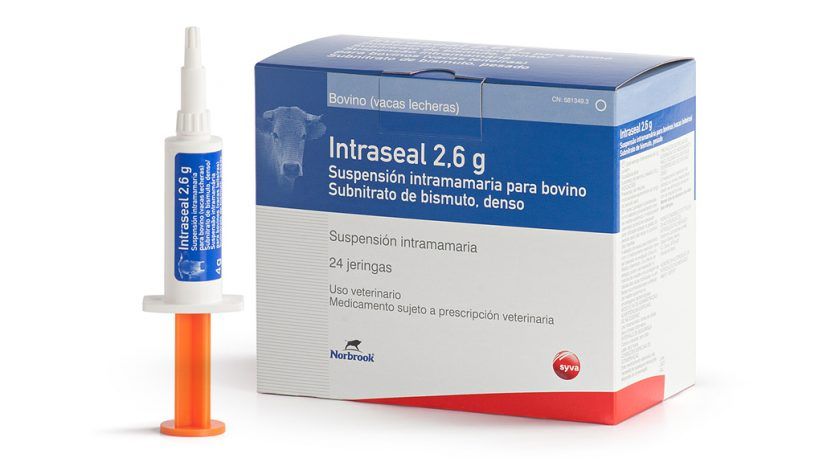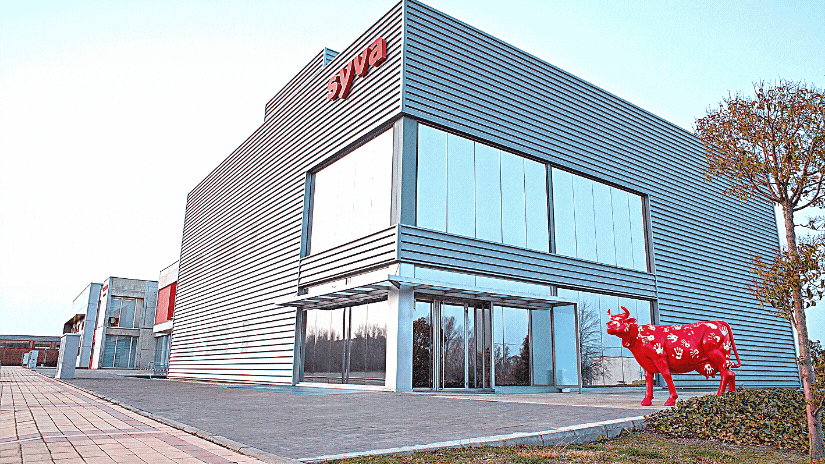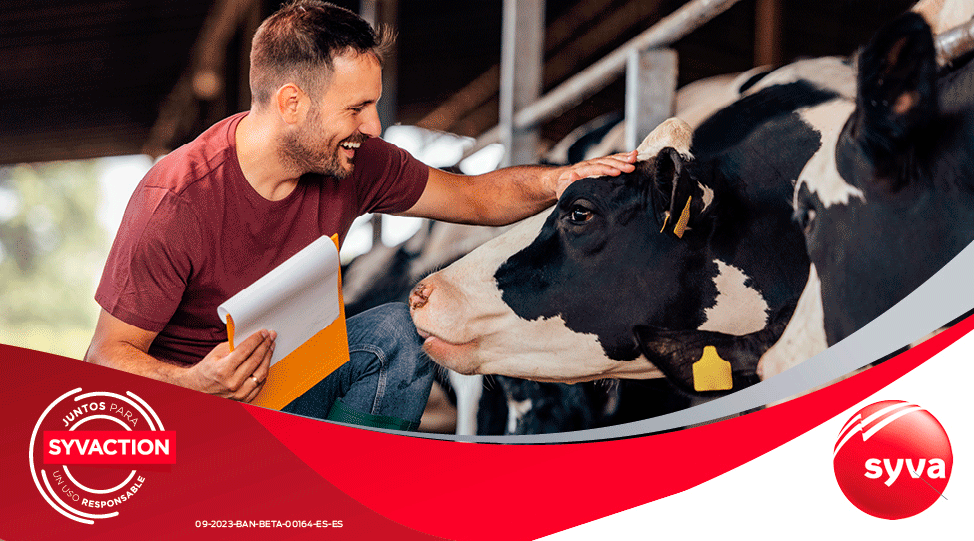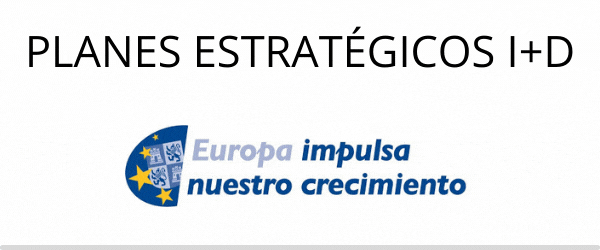Internal barrier seal as intramammary suspension

The information available on this page complies with the legislation and texts in vigour in Spain. For all other countries, please refer to the specific local information or contact our Export Department for more information.
*The content of this page is purely informative. For a correct use of the products, please refer to the indications in the Summary of product characteristics..
Quick product information
| Active ingredient(s) | Posology* | Waiting time | Packaging |
|---|---|---|---|
Bismuth subnitrate | Intramammary administration. | Meat: zero days Milk: zero hours | 24 – 60 – 120 syringes
|
Active ingredient(s)
Bismuth subnitrate, heavy……………………………………………….. 2.6 g/per syringe of 4 ml
Indications
Prevention of new intramammary infections during the dry period.
In cows considered to be free of sub-clinical mastitis, the veterinary medicinal product can be used on its own in dry cow management and mastitis control.
The selection of cows for treatment should be based on the clinical assessment by the veterinarian. Selection criteria should be based on mastitis history and individual cow cell counts, recognised tests for the detection of subclinical mastitis as well as bacteriological tests.
Special precautions
Do not use the veterinary medicinal product only on cows with clinical or subclinical mastitis during the dry-off period. Do not use during lactation. If a sealed pastern develops clinical mastitis, the seal must be manually removed from the affected pastern before appropriate therapy can be established. To reduce the risk of contamination, do not immerse the syringe in water. Use the syringe only once. Do not administer any other intramammary medicinal product after administration of this medicinal product. In cows with subclinical mastitis, the veterinary medicinal product can be used after administration of an appropriate antibiotic treatment to dry the cow in the affected quarter.
Posology
Cattle:1 syringe/quarter immediately after the last milking of the lactation (at the drying time). Do not massage the teat or udder after drug infusion. Care must be taken not to introduce pathogens into the teat in order to reduce to avoid introducing pathogens into the teat. Administer aseptically to avoid contaminate the syringe nozzle. After the infusion, it is recommended to use a bath. or a suitable nipple spray.
As the product is not absorbed following intramammary infusion,it can be used in pregnant animals.
Waiting time
Meat: Zero days.
Milk: Zero hours.
Packaging
Boxes of 24, 60 and 120 intramammary syringes.
With veterinary prescription.
Registry no.: 2874 ESP



